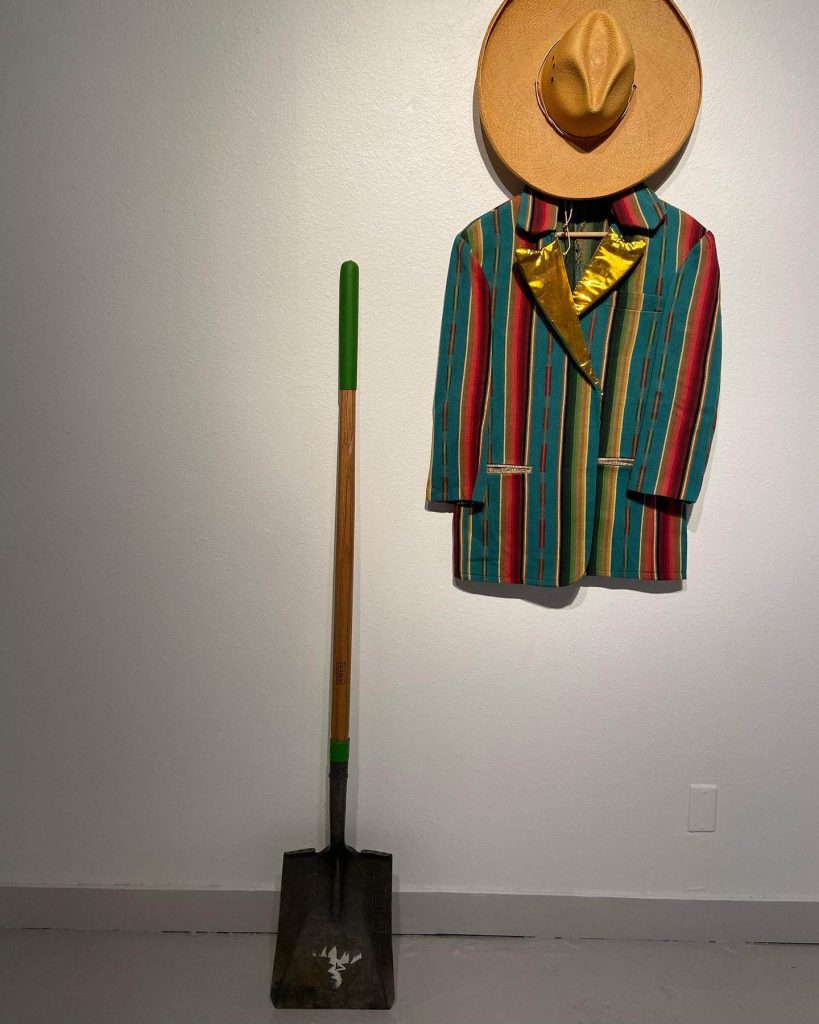

Mark your calendars for Friday April 8th, 5-8pm for the opening of our next exhibit “Cultural Cannibalism”
Cannibalism in its literal sense, the ritualistic consumption of another human, is one of society’s fundamental taboos. Historically it was so reviled that the implication of cannibalism was used to dehumanize groups as “savages.”
Cannibalism as metaphor, however, is celebrated, particularly when it applies to culture. We binge Netflix. We devour ideas. We remix TikTok videos and seek out fusion cuisine.
Six desert artists — Cito Gonzales, Adriana Lopez-Ospina, Kim Manfredi, Flávia Lima do Rêgo Monteiro, Joyce Rooks, and Hector Salas — draw on their histories and heritage to present new artworks in “Cultural Cannibalism” at the Coachella Valley Art Center.
Co-curated by Bill Schinsky & Susan Myrland
—
Joyce Rooks didn’t think much about the Aunt Jemima syrup on the kitchen counter when she was a young girl in the 1960s. Her family went out to eat at Sambo’s; her grandmother told her to speak “proper English so she’d get along in the world.” Later, she began to collect art, objects, and ephemera depicting African-Americans. These images, oppressive and overwhelming, shock us today — but at one time they were considered as accurate and lighthearted as Shaquille O’Neal grinning on the front of a cereal box or the sombrero-wearing charro on a Tapatío bottle. Who owns the right to portray culture with humor? When does caricature pave the way for racism? What is the price of erasure?
Kim Manfredi employs treasured objects belonging to her Italian immigrant ancestors and from her own life, shrouded to represent the whitewashing necessary to assimilate, and juxtaposed with her collages which are informed by Rauschenberg and woven from memories and remnants. The result is a dialogue representing the journey of choice and sacrifice that enabled her to achieve a position of privilege and define her own identity.
Adriana Lopez-Ospina has witnessed the commercialization of her Colombian homeland, where the traditional handcrafts of the Wayuu people are ripped off, imitated, and packaged into tamer, “curated” versions for the market. Filling a room with clouds of wool batting, dye, thread and machinery, Lopez-Ospina confronts our responsibility as consumers, questions the long-term implications, and vividly conveys the torment of seeing culture stripped and sold.
Cito Gonzales, a Chicano artist, builds large dragons out of bones, teeth, seeds, minerals, feathers, acorns, and shells, using the flesh of figs and dates to bind them together. These dragons are guardians, female and protective of the earth, drawing strength from the lives that went into creating them. Gonzales lived off-grid for 26 years near Tuolumne County, CA, learning his craft from a Lakota friend who made drums. Shaping the contours of leftover cowhide led to the creation of the dragons.
Flávia Lima do Rêgo Monteiro’s series, Como Você (“I am like you / I eat you”), uses layers of acrylic paint suspended without canvas, creating a flexible material that looks like skin. A quartet of artworks fuse wild and sacred references, sinuous as the snake that swallows its own tail. The title speaks to our primal desire to connect deeply with others, absorbing their essence until boundaries seem to vanish.
Hector Salas was born and raised in Indio. After serving in the Marine Corps, he went into acting, finding himself initially cast as a soldier, then a cowboy, Mexican cartel member, and terrorist. Drawing on his veteran benefits, he attended the California Institute of the Arts (CalArts), graduating in 2020. His plan was to choreograph a performance that would traverse the experience of growing up in a country club, his firsthand involvement with the landscaping industry, and the cannibalization of bodies sustaining the desert economy. Unfortunately he had a recurrence of cancer he had previously been treated for and instead presented a jacket he made for a previous project to capture the essence of what would have been his performance.
Coachella Valley Art Center is a non-profit organization that strives to enhance the creative vitality of the Coachella Valley.
Your generous support helps us further our goals in giving our region a diverse art space brewing with creative energy
We send out periodic emails about exhibits, events, and classes.